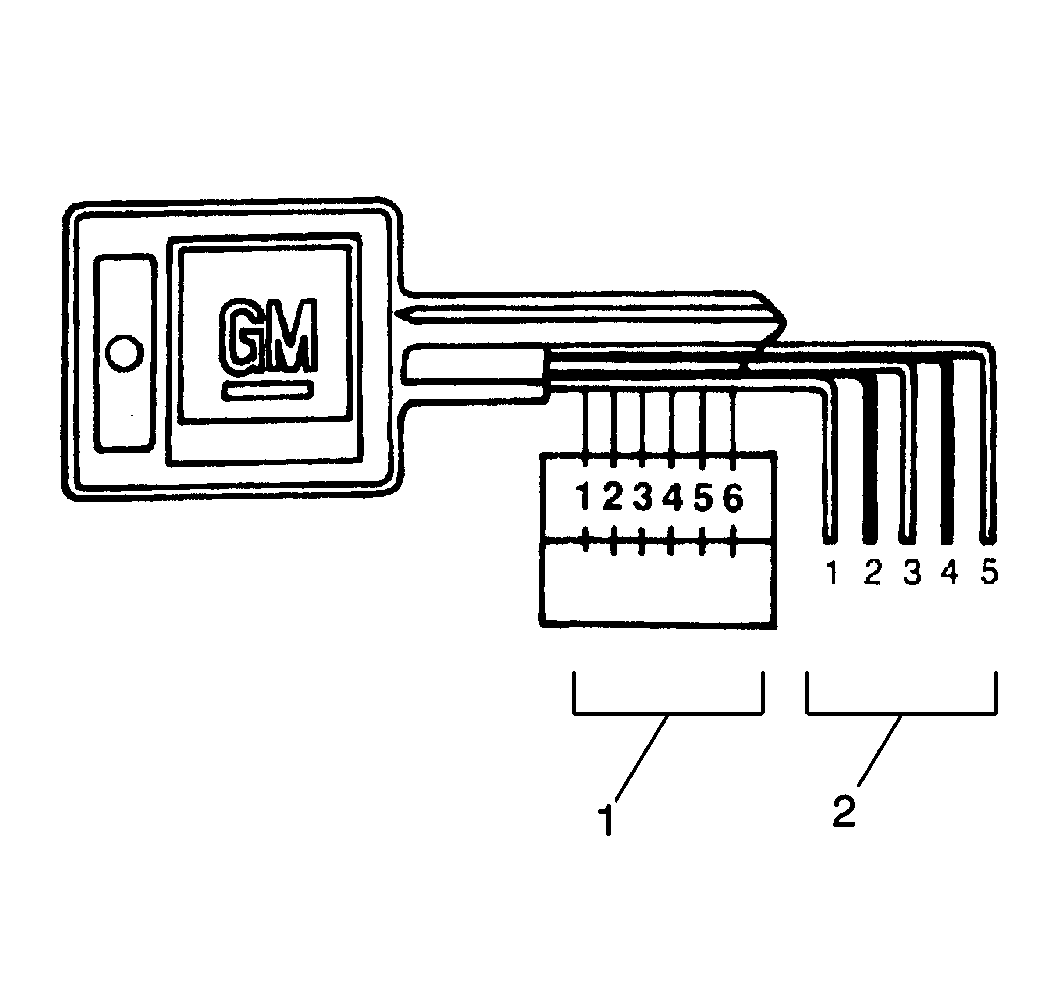Key Identification and Usage
Engineers design the lock cylinder keyway in order that other model
keys will not enter a lock cylinder from the current model year. GM vehicles
have two non-interchangable keys:
| • | A square headed key for the ignition |
| • | An oval headed key for all other lock cylinders |
Identify keys by the four-character key code stamped onto the knockout
portion of the key head and by the identification letter stamped onto the
key shank. After the vehicle owner records the code number, knock the
plugs out of the key head. Use the code numbers and a code list in order
to determine the lock combination of the vehicle. The owners of key cutting
equipment receive the code list from equipment suppliers. If the owner
did not record the code number, determine the lock combination (tumbler
level (2) and position (1)) by laying the key on the key code diagram.
Key Code Diagram


